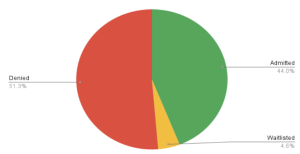Humans can transmit bacteria to urban-dwelling animals
February 10, 2022
Following the Global COVID-19 Pandemic, many people have been extremely worried about transmission of zoonotic diseases (diseases that originate from animals but somehow are introduced to humans). The theory behind the emergence of COVID-19 stems from the disease being passed from bats to humans (or either to an intermediate animal and then to humans). But could the reverse also be affecting animals?
According to a new study, transmission of gut bacteria from humans to nearby animals is hurting animal populations susceptibility to disease. Animals most effected by this phenomenon are those who live in either in close proximity to humans, or who live in urban areas. These “urban” animals had higher incidences of bacteria in their gut which are more commonly associated with humans than animals who lived further away from human settlements.
In all animals, including humans, the composition of gut bacteria plays a very important role in the maintenance of health, regulation of digestive processes, and other important bodily functions. According to Science News, studies conducted with mice have shown that an increased presence of certain bacteria introduced into test animals enhanced their physical fitness. While further research on the subject is needed, the scientists conducting that study concluded that their discovery could have implications for human athletes.
While certain gut bacteria may be helpful for animals, the opposite is true that other bacteria can affect the health of animals in negative ways. This is particularly true when animals obtain types of bacteria which they don’t typically encounter in their natural habitat. Animals with higher instances of gut bacteria typically associated with humans have been shown to have higher incidences of gastrointestinal diseases and immune system deficiencies than those without an overabundance of gut bacteria typically associated with humans. While this particular study looked specifically at coyotes and lizards specifically, further research still has to be done on a wider variety of other animals.




